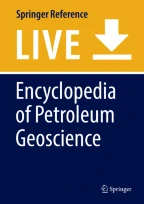
The term “Petroleum” is derived from the late Medieval Latin terms petra meaning “rock” and oleum meaning “oil.” The term was not use until the fifteenth century (Douet 2020). Petroleum is a naturally occurring, yellow-to-black liquid found in rock formations beneath the Earth’s surface or as seepages in outcropping rocks. It consists principally of hydrocarbons of various molecular weights and other liquid organic compounds. The term “Petroleum” is used for both naturally occurring unprocessed crude oil and the petroleum products derived from it. In the industry usage, it includes all liquid, gaseous and solid hydrocarbons. In the nineteenth century, it was also used to refer to mineral oils produced by distillation from mined organic solids such as cannel coal and oil shale and the refined oils produced from them.
This entry deals with the physical properties and types of petroleum. Petroleum (Fig. 1) is composed of hydrocarbon molecules (Fig. 2) which are.